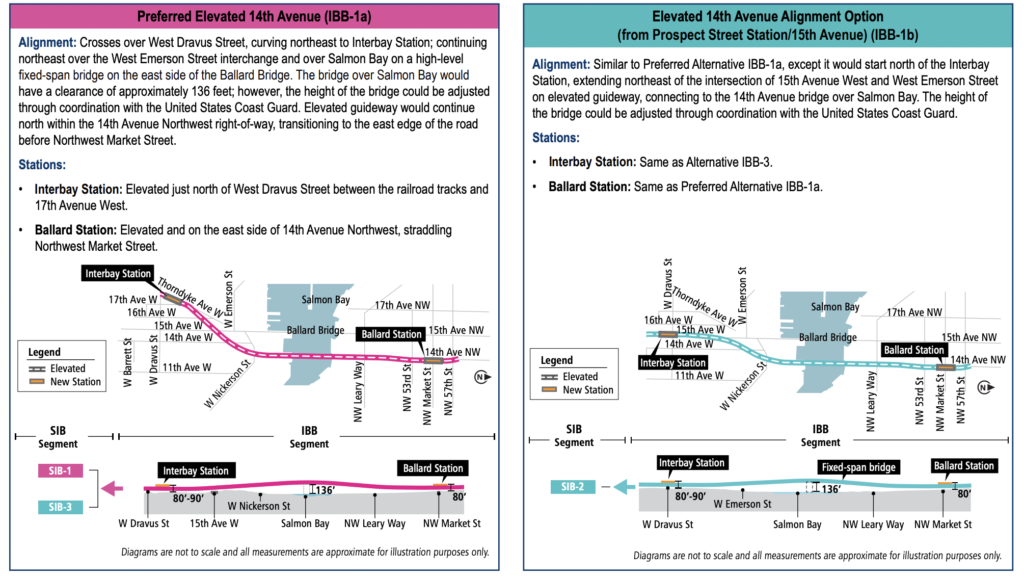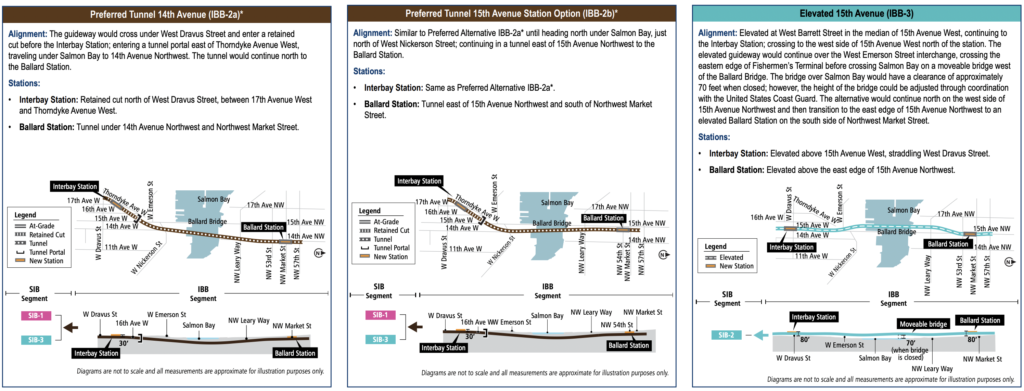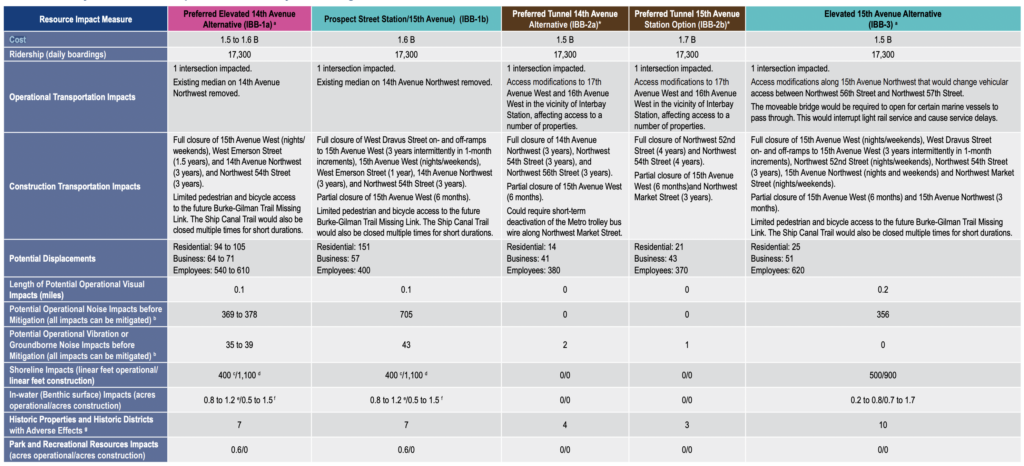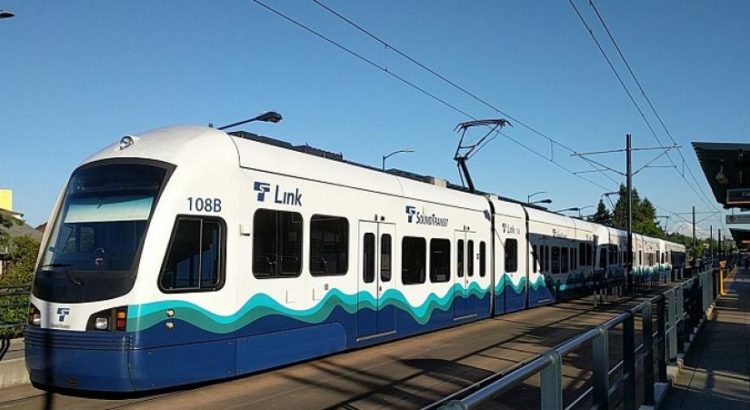The draft environmental impact statement (EIS) for the West Seattle and Ballard Link Extension project is now available online.
Sound Transit and the Federal Transit Administration published the draft EIS earlier this week. The EIS addresses the various proposed light rail alignment options and station locations with potential environmental impacts and costs.
Work on the West Seattle extension is expected to begin in 2026, with an expected construction timeline of six years. The Ballard Link Extension is expected in 2037 or 2039, depending on funding.
The Interbay and Ballard segment of the extension includes the area between West Dravus Street and West Barrett Street in Interbay north to NW 58th St in Ballard. All alternatives include two stations, one in Interbay and the other in Ballard.
The segment includes three alternatives, which all travel north/south along 15th Ave W to 15th Ave NW or 14th Ave NW. Two alternatives have elevated bridges over Salmon Bay, and the third is for a tunnel under Salmon Bay.
There are two different Ballard Station locations being discussed; one is on 14th Ave NW, and the other on 15th Ave NW. In the diagrams below, pink is used for preferred alternatives, brown is for preferred alternatives with third-party funding, and blue is for other alternatives.
The current preferred alternative would cost $1.5-1.6 billion and would include an elevated bridge east of the Ballard Bridge, aligning along 14th Ave NW with the Ballard Station located at NW Market St and 14th Ave NW.




The bridge alternatives would meet the vertical clearance of the Aurora Bridge and exceed the horizontal clearance of the Ballard Locks. Both elevated bridge options would have impacts on the Ship Canal, with moorage reductions in Salmon Bay and potential navigation constraints for Fishermen’s Terminal.
Construction for elevated bridges would also impact Ship Canal marine traffic; there would be one or two short-term closures (24-48 hours) of the navigation channel during construction, and could also require intermittent closures of part of the navigation channel for up to about four weeks.
Another serious consideration is the impact the bridges would have on the shoreline and in-water activities for local tribes. The Muckleshoot Indian Tribe and Suquamish Tribe have treaty-protected fishing rights in and access to Salmon Bay, and those rights may be affected by the construction of all the bridge alternatives.
Other concerns about the elevated bridges include visual impacts on views from Salmon Bay toward the Ballard Bridge.
“Due to steeply rising real estate prices and other construction expenses, Sound Transit projects currently in early planning and design, including the West Seattle and Ballard Link Extension Project, are seeing significant cost estimate increases,” Sound Transit writes in the EIS.
Sound Transit set extended deadlines for the light rail extensions to address the affordability issue: “This ‘affordable’ schedule established an approach to prioritize, fund, and manage program work over time,” the EIS reads.
Sound Transit will accept comments on the draft EIS from Jan. 28 through April 28.



Recent Comments